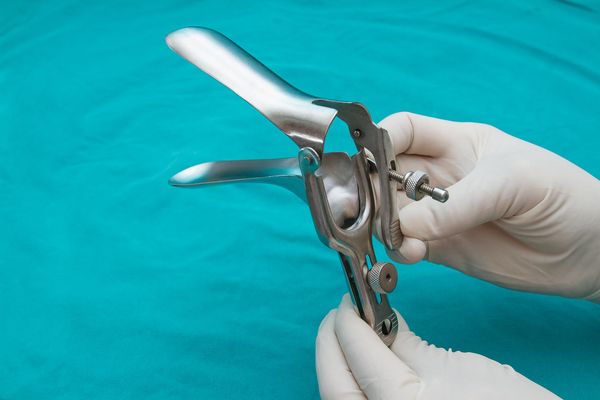By Nicolas Gonzalez-Podesta
In this age of gradual marijuana legalization, cannabis references are everywhere. New products pop up, and people you never expected to talk about marijuana are bringing it up. Did you really discuss the difference between sativa and indica with Grandma over the holidays?
As we have broader conversations about the assimilation of cannabis into our society for medical and recreational purposes, it's important to familiarize ourselves with the vast, and sometimes confusing, vocabulary that exists in the cannabis landscape.
Words matter. If we're to have responsible dialogue surrounding cannabis, it's important that we understand the meaning of the words and the context in which they have historically been used.
Whether you're considering consulting your doctor about medical marijuana or trying to navigate your way around your neighborhood's new dispensary, here are 20 weed words to kick off the expansion of your cannabis vocabulary.
Understanding the plant
- Cannabis is a biologically complex species of plant with a wide variety of uses. The word refers to both the nonintoxicating (hemp) and intoxicating (marijuana) varieties. Cannabis has been used for its fibers and medicinal qualities for more than 12,000 years and has played a historic role in some religious ceremonies around the world.
- Marijuana is a term colloquially used to refer to cannabis with intoxicating effects. This term gained popularity in late 1920s and early 1930s propaganda that sought to vilify the plant for political purposes, which led to its eventual prohibition through the Marihuana Tax Act of 1937.
- Hemp refers to nonintoxicating varieties of cannabis with less than 0.3 percent THC that are produced for their seeds or fibers. Hemp fibers can be used to manufacture high-quality materials for clothing, paper, fiberboard and even fuel. Hemp seeds are rich in protein and are nutritious.
- Weed is a slang term for marijuana. Although the use of the word dates back to 1929, it wasn't until the early 1990s that it rose in popularity, replacing terms like "grass," "dope" and "pot." Today weed is the most culturally relevant and popular word used for marijuana.
- Flower is a term used to refer to the smokable part of the cannabis plant, often called the bud. The term flower is used to differentiate between other cannabis-based products.
- The endocannabinoid system is a series of receptors, corresponding compounds and enzymes that make and break up those compounds. It is the system in our bodies that interacts with the cannabis plant. When we feel the effects of cannabis, we're feeling the interaction between cannabinoids and our endocannabinoid system.
- Cannabinoids are the chemical compounds produced in our body and by the cannabis plant that interact with our body's receptors to produce a variety of effects. When we feel happy, relaxed, excited, nervous, calm, energized, hungry or relieved after consuming cannabis, cannabinoids are largely responsible for these feelings. More than 100 cannabinoids have been discovered in cannabis, but there are only a handful that we understand and consider common.
- Endocannabinoids are cannabinoids that are naturally produced by our bodies (endo = internal; within).
- Phytocannabinoids are cannabinoids that are produced by the cannabis plant (phyto = of a plant; relating to plants).
- Tetrahydrocannabinol (THC) is the most common plant-produced cannabinoid, responsible for many of the sensory and psychoactive effects associated with cannabis, commonly described as a "high."
- Cannabidiol (CBD) is the second-most common plant-produced cannabinoid. It does not have the intoxicating effects of THC and is primarily known for its significant medicinal properties.
- Terpenes are aromatic compounds naturally found in a large variety of plants, including cannabis. Terpenes give different cannabis cultivars (plant varieties) their unique aroma and flavor.
- Strains are part of a general classification for cannabis varieties that have been used by the industry as a simple, useful way to differentiate cultivars.
- Sativa refers to a type of strain that tends to grow relatively taller with thin leaves. It is sometimes referred to as a "daytime" strain because it tends to provide cerebral, uplifting and energetic effects.
- Indica refers to a type of strain that tends to grow relatively shorter with narrower leaves. It is sometimes referred to as a "nighttime" strain because it tends to provide relaxing, sedating and heavy physical effects.
- Hybrid refers to a genetic cross of two or more strains. Hybrid parents are selected for their genetically desired traits and crossbred to result in a plant with the desired combination of both strains' properties.
- Concentrates are cannabis-derived products made from the desired, accumulated plant compounds in cannabis—primarily cannabinoids and terpenes. Concentrates come in a variety of textures made using one of many methods and can be consumed several ways. The most popular and common form of consumption is "dabbing," the act of vaporizing the concentrate.
- Extracts are cannabis concentrates created with the use of a solvent (liquid capable of dissolving other substances). High-tech extraction machines use solvents like butane, propane and ethanol to remove the desired cannabinoids and terpenes from the plant.
- Vape is a term used to describe the act of vaporizing cannabis. Unlike smoking, which involves inhaling combusted dry flower, vaping heats flower or concentrates at a low temperature to vaporize the compounds for inhalation.
- Vaporizers are devices that control heat to facilitate vaporization of the cannabinoids and terpenes in cannabis. Vaporizers come in portable and table-top varieties. Currently, the most common type of vaporizer is a vape pen.
How Cannabis Affects The Body
Cannabis Components, Varieties and Products
Even if you don't use cannabis, the terminology of the plant is becoming pervasive. By familiarizing yourself with the lingo and scientific terms, you'll be more informed to help shape your community's response during the transition to legalization.
Nicolas Gonzalez-Podesta is the Director of Science and Education at Weedmaps. He directs Weedmaps' educational initiatives and works with a range of professionals including scientists, government officials and educators. Weedmaps is the world's first and largest marijuana technology company, where users can search for brands, dispensaries, deliveries, doctors and cannabis information.







